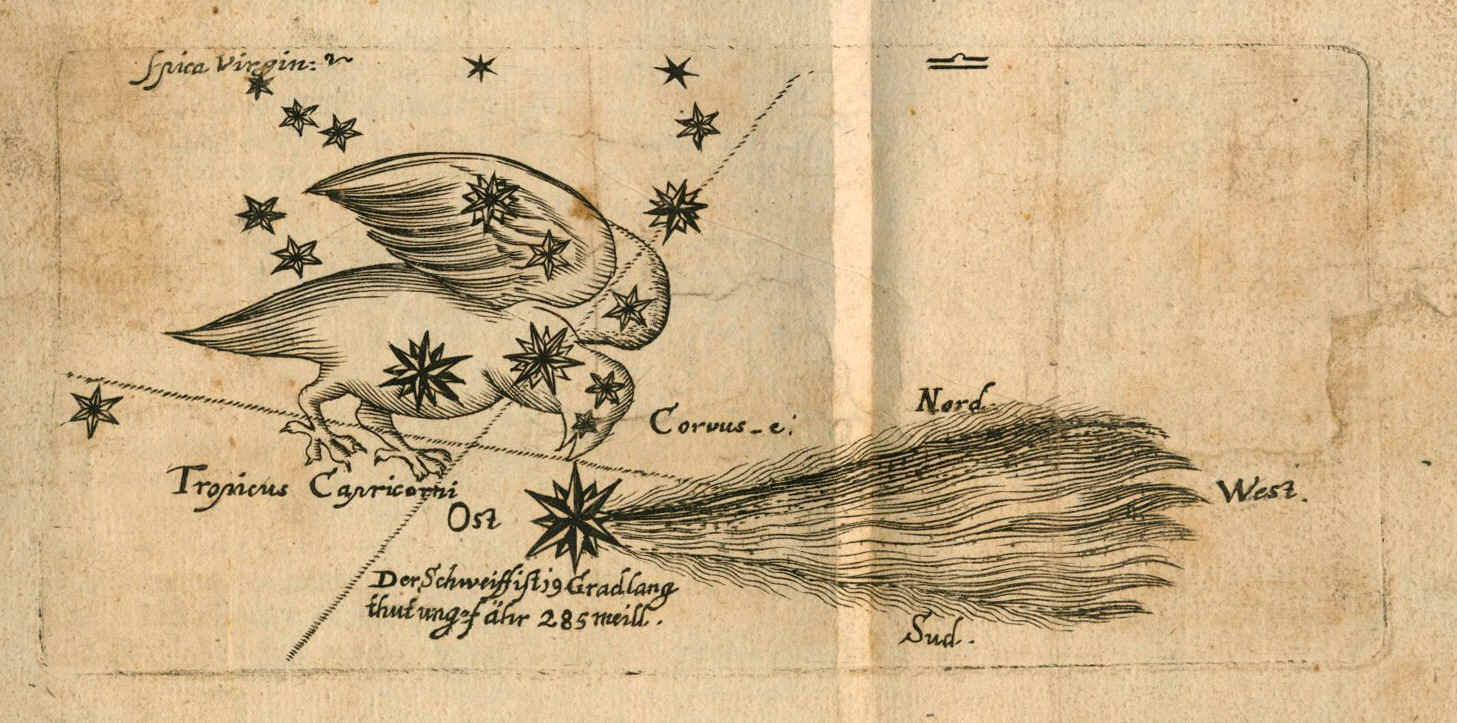



This plate is contained in a book which compiled the international and local events that happened between the two half-yearly trade fairs in Frankfurt. These Relationes are a kind of early journals or periodicals. The plate compiles news of the comet C/1664 W1 from several comet broadsheets that appeared around that time. These sources can be identified easily. Two examples are shown below.
The text in the book says (translated into modern English):
"New comet-star seen -- At the end of the 1664th year a very new and --according to many opionions-- a very special comet-star was seen everywhere before
dawn. It did not look the same in different places where it was observed. It turned its tail sometimes to the east and sometimes to the west as well. It is said to
be similar in size to the comet seen in 1618. In Hungary [...] and many other places he showed its tail and this is why the Turkish sent people out to ask what it
would mean. Elder people said that some and 40 years ago [...] a similar star was seen. In Hmburg the star rose at five o'clock in the morning in the south-east
and stayed there until seven. The tail, which was three Brabantian cubits long was pointed to the south-west. In Genua and everywhere in Italy it was seen as a
bright shining sphere. [...] its tail was more than 336 German miles long. It did not cause plague because it was situated in the mouth of the whale-fish which is
a watery sign. But it says bloody war. But others also said it was a good sign."





Catalogue of Comet Discoveries
If you have any questions, please email me (maik@comethunter.de).